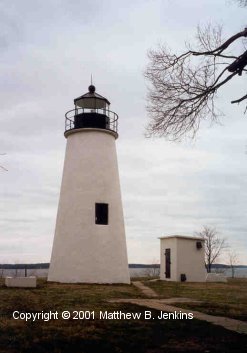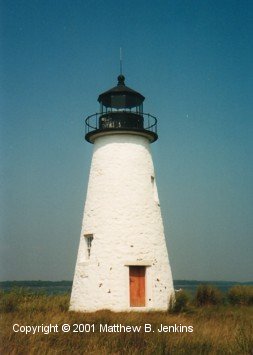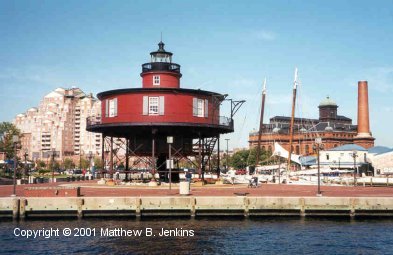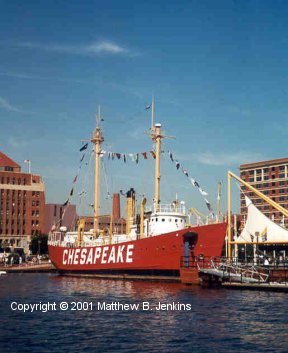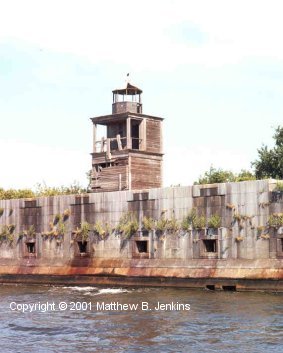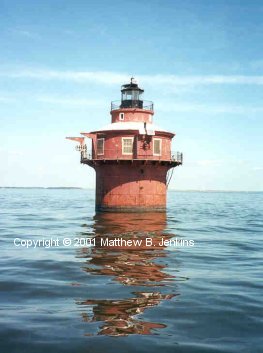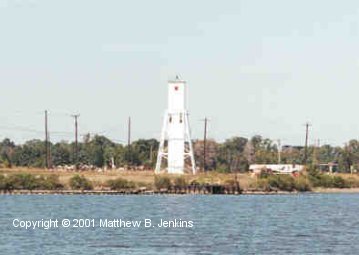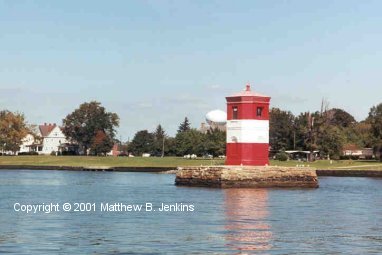
Concord Point Light
Havre de Grace, MD
cir. 1838
The Concord Point Lighthouse was commissioned in 1827 to warn ships of currents and shoals at where the northern tip of the Bay meets the Susquehanna River. It stands 39 feet high. Like many of the Bay's old tower lights, it was designed and built by John Donahoo out of Port Deposit granite. Several upgrades to the lighting apparatus were made over the years, cumulating in a fifth order Fresnel lens. The station was electrified in 1920 and served until 1975 when it was decommissioned by the Coast Guard. Its 148 years of continuous use are the longest of any lighthouse in Maryland. The tower sits in the middle of what is now quite a nice little park in the old section of scenic Havre de Grace, Maryland. There are plans for renovating the near-by keeper's dwelling and the new Havre de Grace Maritime Museum has recently opened across the street.
(U.S. Coast Guard Historian's page - Concord Point Light)

